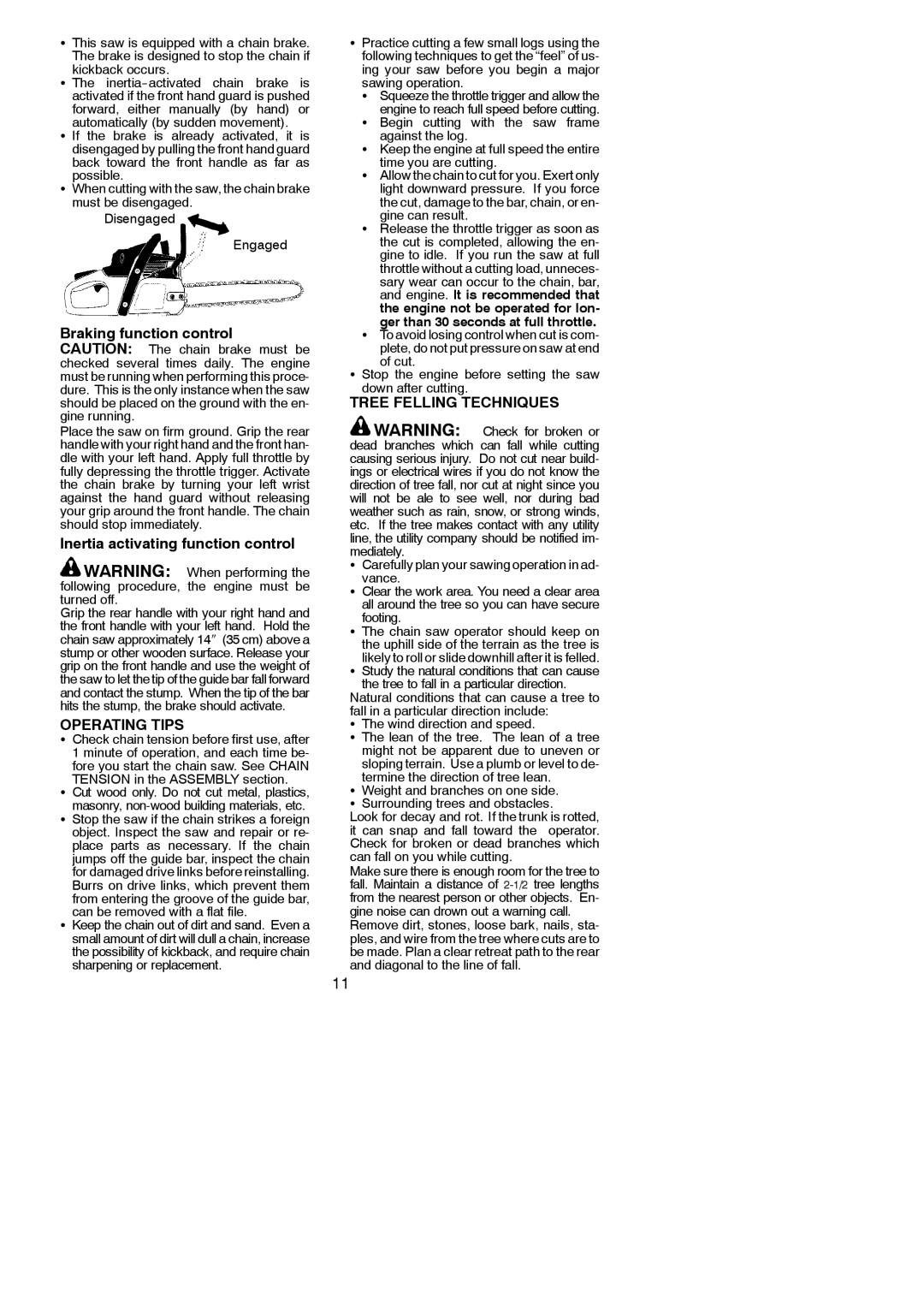576600401, MC3516, 966625201 specifications
The McCulloch 966625201 and 576600401 models, along with the MC3516, represent a dynamic trio of outdoor power equipment designed to enhance gardening and landscaping tasks. These products are renowned for their reliability, efficiency, and user-friendly features, making them popular choices among both homeowners and professionals.The McCulloch 966625201 chainsaw is particularly noted for its high performance and durability. It features a powerful engine that delivers excellent cutting performance, enabling users to tackle a variety of wood-cutting tasks with ease. The chainsaw's ergonomic design ensures comfort during extended use, reducing fatigue for the operator. Additionally, the tool is equipped with an easy-start system and a low-vibration mechanism, enhancing both usability and safety.
Another impressive model, the McCulloch 576600401, is a robust trimmer designed for versatility in lawn care. This model boasts a powerful motor and a dual-line feed system, providing efficient cutting and trimming capabilities for various vegetation types. The trimmer’s adjustable handle allows for a customizable grip, which is essential for reaching difficult angles or tight spots around gardens. Its lightweight design simplifies maneuverability, making it a favorite for both amateur gardeners and savvy landscapers.
The McCulloch MC3516 is a multi-functional tool that combines a chainsaw, hedge trimmer, and pruner, making it an invaluable addition to any homeowner’s toolkit. The MC3516 stands out with its innovative combination of features, allowing users to switch between tasks effortlessly. The detachable components are easy to change, enhancing versatility while minimizing the need for multiple tools. Its compact design and lightweight construction make it easy to transport and store, catering to those with limited space.
All three models exhibit advanced technologies aimed at improving performance and user experience. They are designed with eco-friendly principles, ensuring reduced emissions and noise levels during operation. Moreover, features like automatic oiling systems and quick chain tensioning ensure optimal maintenance with minimal user effort. These characteristics underline McCulloch’s commitment to delivering tools that not only excel in power and efficiency but also prioritize environmental sustainability.
In conclusion, the McCulloch 966625201, 576600401, and MC3516 provide an array of features and technologies that set them apart in the market. Their ease of use, ergonomic designs, and innovative functionalities make them excellent choices for anyone looking to enhance their outdoor maintenance capabilities. Whether for professional landscaping or home gardening, these tools embody McCulloch’s promise of performance and reliability.

